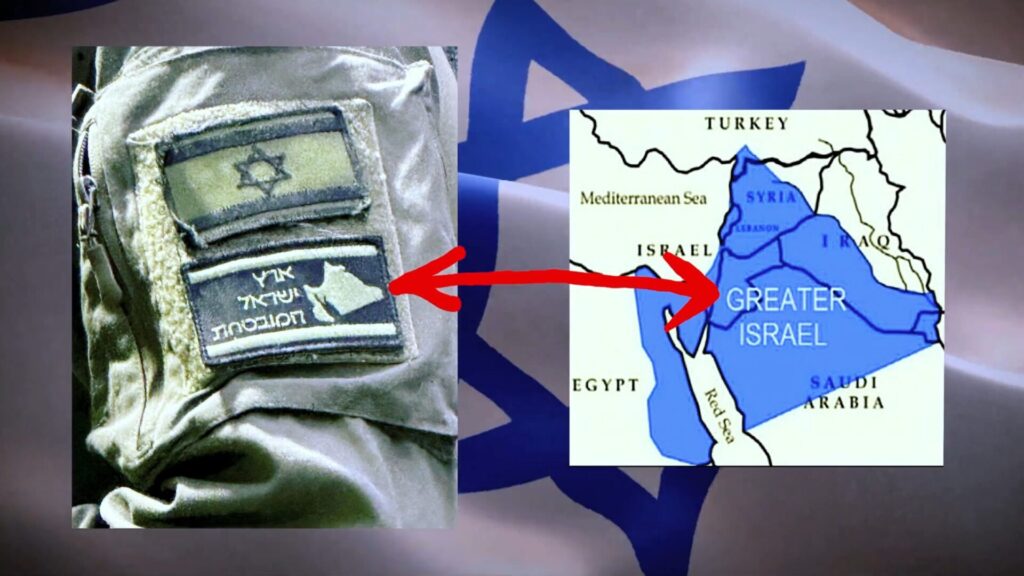
The U.S. is building a MASSIVE embassy in tiny Lebanon—the second largest embassy in the world.
Why?
To run secret prisons, spy on Lebanon and the region, and use it as a hub for flights to Cyprus.
This is not an embassy.
It’s a fortified CIA base. pic.twitter.com/FV9ONbIsQI
— sarah (@sahouraxo) January 18, 2025
Head of ICJ Nawaf Salam named as Lebanon’s new prime minister
Euronews: Western-backed groups and independents in the Lebanese parliament made Salam’s nomination. Salam has the support of Saudi Arabia and Western countries as well. In past years, Hezbollah has repeatedly blocked Salam from becoming prime minister, labeling him as a US-backed candidate.
Salam71 is a member of a prominent Sunni Muslim family from Beirut. His uncle, Saeb Salam, was one of the country’s leaders who fought for independence from France and later served several terms as prime minister. Salam’s cousin, Tammam Salam, also served as prime minister for two years back in 2014. In 2007, he was named Lebanon’s Ambassador to the United Nations, where he served in that capacity for 10 years.
In 2018, Salam was elected as a judge on the ICJ, and in February of last year was elected president of the UN’s top court
‘Pro-Israel judge’ to head ICJ after Nawaf Salam is appointed Lebanon PM
The New Arab: Julia Sebutinde triggered debate for her emphatic rejection of South Africa’s genocide allegations against Israel as a Lebanese judge resigns to become PM.
The next president of the ICJ will be Judge Julia Sebutinde. She also happens to be the only judge who supported lsraeI.
— Khalissee (@Kahlissee) January 14, 2025
Never forget the exposure that Mossad has been bIackmaiIing and intimidating ICJ judges for years.
This is once again overt corruption by Israel. pic.twitter.com/SxKqEL0cKV
Jonathan Cook, journalist: Julia Sebutinde from Uganda – the only judge of the 15 permanent members of the International Court of Justice to reject the genocide case against Israel a year ago – will be its new president. This is certainly not accidental. Her predecessor, Nawaf Salam, has stepped down unexpectedly early – opening up the top slot for Sebutinde, his deputy – so he can become the new prime minister of Lebanon in a ceasefire deal brokered by the US on Israel’s behalf. Hmm. Sebutinde was elected to her role last February, as Israel and the US turned up the heat on the ICJ following its genocide ruling the month before. Why did a majority of the other judges choose her? Presumably, none of the other judges fancied becoming the spokesperson for a genocide ruling against Israel, given the inevitable personal and professional reprisals from the US. (Remember Washington is currently smearing and sanctioning leading figures at the ICJ’s sister court at the Hague, the International Criminal Court, for issuing an arrest warrant against Netanyahu). Sebutinde needs to have no such qualms, given that – if her legal reasoning last year is any measure – she will continue to support Israel until every last Palestinian in Gaza is dead. Pointing out this context isn’t racism (Sebutinde is black), and it isn’t sexism (Sebutinde is a woman). There really are conspiracies. Powerful governments really do conspire to screw over the weak – and they have lots of ways to do it. They also often choose to weaponize race and sex because they provide a good cover story.
First published on October 30., 2024
Tomorrow marks 76 years since the first israeli massacre in south Lebanon, in the village of Houla, on October 31, 1948. Today, echoing their historical actions, israeli terrorists wiped out nearly the entire village of Houla in a single strike, detonating bombs across the area. pic.twitter.com/AK6lCkCTu9
— ➳❥ (@VintageVault8) October 30, 2024
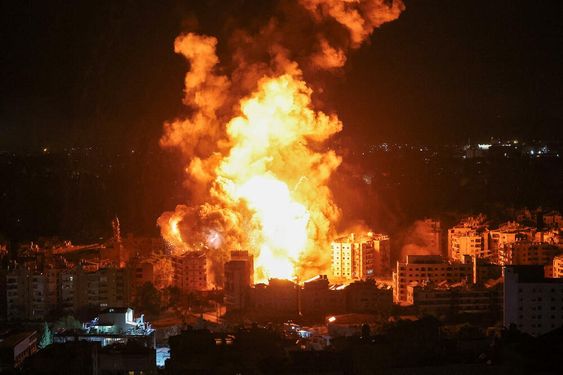
US ambassador to Lebanon promotes ‘internal uprising’ to assist Israel
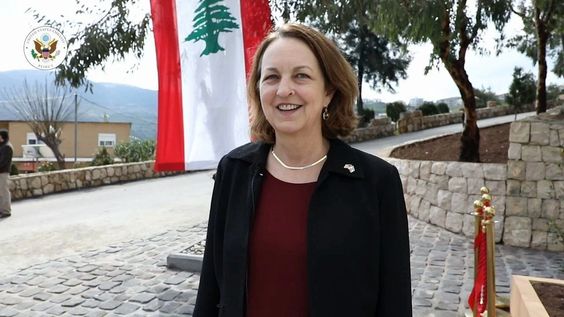
The Cradle: A high-ranking Lebanese security source revealed to Al-Akhbar newspaper that the US Ambassador to Lebanon, Lisa Johnson, is continuing her agenda to prepare Lebanon for a “post-Hezbollah era” by mobilizing “internal” forces against the Islamic resistance movement while it fights the Israeli Army.
In discussions with Lebanese politicians, Johnson reportedly said, “Israel cannot achieve everything through war; it’s time for you to do your part and launch an internal uprising under the banner of ‘Enough.’”
The ambassador added, “The Lebanese people must show their desire to rise up and get rid of Hezbollah and return to the context that emerged after the assassination of Rafik Hariri, especially since the regional, international, and field circumstances are in your favor.”
According to the source, the ambassador asked the politicians, “Why do you seem afraid? Hezbollah has been defeated, its leadership is destroyed, and we are with you, and the entire free world stands by your side.”
Johnson encouraged her Lebanese allies to advocate for the election of Lebanese Armed Forces Commander General Joseph Aoun as President of Lebanon, saying, “He [Aoun] will appoint a strong commander for the Lebanese Army, and we will support the Army in restraining all Hezbollah supporters. You will have backing from Arab states and the West. But the time to act is now.”
According to the high-level Lebanese security source, Ambassador Johnson’s allies are conducting incitement operations to stoke internal sectarian tensions in areas where displaced persons, mostly Shia from Beirut’s southern suburbs and the south of Lebanon, are now staying after fleeing their homes due to Israeli bombing.
Lebanon’s society is multi-confessional and multi-national, making the country susceptible to division by outside forces. Its demographic is comprised of Christians (Catholic, Orthodox, and Maronites), Muslims (Sunni and Shia), Druze, and Palestinian and Syrian refugees.
Civil war engulfed Lebanon’s multifaceted society between 1975 to 1990. An estimated 150,000 people were killed.
The source speaking with Al-Akhbar added that “mobilization operations” are being carried out in some neighborhoods and areas controlled by the Lebanese Forces, a right-wing Christian political party, under the pretext of “protecting our areas from the chaos of the displaced and so that they do not turn into occupiers.”
In an effort to weaken Hezbollah, Johnson has also begun calling on politicians, civil organizations, and media professionals with whom she has influence to drive a wedge between Lebanon’s Shia community and Hezbollah.
The source said that Johnson has clearly stated her wish to take advantage of the current Israeli war to eliminate Hezbollah completely, not only militarily but politically as well.
“We do not only want to limit Hezbollah’s influence, but we will strike its support lines, and we are working non-stop to bring down the regime in Iran as well,” Johnson reportedly said.
BREAKING:
Israel is threatening to obliterate Baalbek in Lebanon—a city with 9,000 years of history, architectural marvels, and UNESCO World Heritage status.
Baalbek is older than most nations.
This is an assault on civilizational heritage that belongs to all humanity. pic.twitter.com/7qaPLcIdYe
— sarah (@sahouraxo) October 30, 2024
Vanessa Newby, Leiden University
Israel has launched its sixth incursion into Lebanese territory since 1978. Here’s a timeline of how this seemingly unending conflict has evolved.
1970s: PLO occupation of South Lebanon
The conflict in south Lebanon began in earnest in 1978, but the seeds were sown as early as 1970. In September of that year, the Jordanian government expelled the Palestine Liberation Organization (PLO) from its territory in what was known as “Black September.”
In response, the PLO moved its base to southern Lebanon, which afforded them the logistical access to launch Katyusha rocket attacks on Israel on its northern border. At the time, the Lebanese government in Beirut was unable to extend its authority in the south, and after the Lebanese Civil War started in 1975, the area remained lawless.
In this environment, the PLO thrived, conducting escalating attacks on northern Israel, which included incursions into Israeli territory. On March 14, 1978, Israel invaded Lebanon as part of Operation Litani.
This was a military campaign partly in response to what became known as the coastal road massacre when Palestinian operatives killed 38 people and wounded 70 near Tel Aviv. The Israeli operation was designed to clear Palestinian militants from areas south of the Litani River.
1978: Arrival of Unifil and the zone of security
In response to the deteriorating security situation in south Lebanon, on March 19, 1978, the UN established a peacekeeping force—the United Nations Interim Force in Lebanon (UNIFIL)—in the area south of the Litani River. Unifil was mandated to confirm the withdrawal of Israeli forces from Lebanon, restore international peace and security, and assist the Lebanese government in establishing effective authority in the area.
Israel declared a ceasefire on March 21, 1978, and the first Unifil contingents arrived the following day. The Israeli withdrawal was supposed to see the area handed over to Unifil. But the IDF reneged on the final stage of the agreement, establishing instead what it called a “zone of security” and awarding authority to a local militia – the South Lebanon Army – whom they continued to support. It was in this environment, unregulated and populated with multiple sub-state militias, that Unifil was deployed.
1982: Israel invades
In June 1982, exasperated by the failure of Unifil to eliminate the Palestinian groups and other militia in the south, Israel reinvaded Lebanon in “Operation Peace for Galilee.” This time, the army marched as far as Beirut and remained there until September 29, 1982, after the PLO officially withdrew from Beirut (to Tunisia).
Israel continued to occupy most of south Lebanon until September 3, 1983, when it retreated to the south of the Awali River in south Lebanon because of rising IDF casualties from guerrilla attacks by militants. In 1985, Israel further retreated in stages between February and April back to the zone of security, which it continued to maintain.
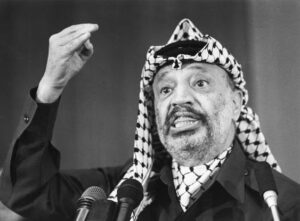
In 1982, the Palestinian Liberation Organisation, led by Yassir Arafat, left Lebanon for Tunisia.
Friedrich Stark / Alamy Stock Photo
The political vacuum left by the PLO in south Lebanon was swiftly filled by a new conflict between two competing organizations. In 1984, Hezbollah was formed. After gaining popularity in the Beqaa Valley, it began to infiltrate the south, competing with rival group Amal for popular Shia support.
By 1986, Amal and Hezbollah were conducting their own war for control of the south, which only ended in 1989.
1990: End of the civil war
In 1990, the Taif Accord ended the wider Lebanese civil war, which had raged since 1975. The power-sharing agreement paved the way for the departure of Syrian and Israeli forces. Most militias disbanded, and the Lebanese Armed Forces (LAF) began to be rebuilt, having disintegrated during the civil war due to sectarian tensions.
However, the government in Beirut remained unable to exercise authority in the south due to a lack of resources and political consensus, and there remained no functioning state authority in the area.
Between 1990 and 2000, Israel launched two further military operations in south Lebanon: Operation Accountability in 1993 and Operation Grapes of Wrath in 1996. The IDF still occupied the zone of security in Lebanon, and both these military operations were launched to support Israel’s broader goal, which was to rid the area south of the Litani River of Hezbollah.
Both incursions caused significant damage to infrastructure and civilian displacement. The most severe incident was the 1996 shelling by the Israeli Air Force of the UN Fijian compound at Qana, 12 miles north of the border, which resulted in the death of 106 civilians.
These two operations failed to eliminate Hezbollah, and in the late 1990s, the group increased its attacks on the IDF and the pro-Israel militia, the South Lebanese Army. Using improvised explosive devices disguised as rocks, as well as snipers and assaults on military compounds, they eroded IDF morale. And the loss of Israeli life made the occupation highly unpopular in Israel.
Local Lebanese civilian protests against the occupation, which had cut the zone off from the rest of Lebanon, also grew in scale and frequency.
2000–2006: Hezbollah rules South Lebanon
On May 25, 2000, the IDF conducted a hasty withdrawal. In June, the United Nations established the “Blue Line,” a demarcation line dividing Lebanon from Israel and the Golan Heights for the sole purpose of confirming the withdrawal of the IDF from Lebanese territory. But Hezbollah quickly filled the vacuum that emerged after the IDF withdrawal.
After that, several factors conspired to prevent peace. The most frequently cited by Hezbollah was the claim that Israel had failed to withdraw from small sections of internationally recognized Lebanese land. They claimed that Israel, as an occupying force, remained a legitimate target for attacks.
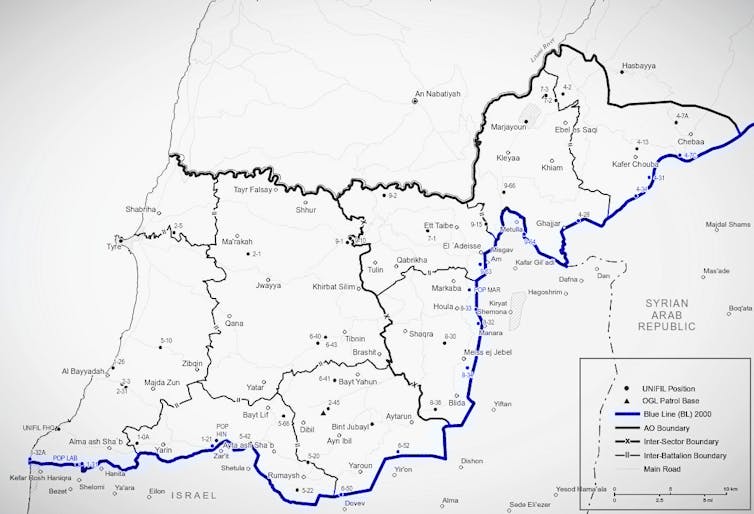
After the 2000 withdrawal, Hezbollah became the de facto political and military authority in the absence of the LAF, which, while regrouping, was suffering from a lack of funding and was therefore unable to deploy to the south. Support for Hezbollah’s deployment was also backed by Syria, which dominated politics and security in Lebanon and retained around 15,000 troops in the country until 2005 when they withdrew after massive public demonstrations triggered by the assassination of Lebanese Prime Minister Rafik Hariri.
The Blue Line remained contested in some sections, leading to confrontations between Hezbollah and Israeli troops, which gradually escalated and came to a head in July 2006.
2006: War between Hezbollah and Israel
On July 12, 2006, Hezbollah operatives ambushed an IDF patrol south of the Blue Line, killing three soldiers and kidnapping two. After five more IDF soldiers were killed during a failed rescue attempt, Israel launched a heavy retaliatory response. This included air strikes and artillery fire on Lebanese civilian infrastructure and an air and naval blockade, followed by a ground invasion of south Lebanon.
In response, Hezbollah launched rockets into northern Israel and engaged the IDF in guerrilla warfare. The war raged for 33 days and ended on August 14 with the implementation of a UN mandate, which all the parties agreed to abide by.
It is estimated that up to 1,300 Lebanese people and 61 Israelis were killed. The invasion severely damaged Lebanese civil infrastructure and displaced approximately 1 million Lebanese in the south and 300,000 to 500,000 Israelis from northern Israel.
Since 2006
Because Lebanon and Israel don’t have diplomatic relations, dialogue has been mainly between the IDF and the LAF communicating through Unifil. Since 2006, Unifil has been mandated with “assisting the LAF in taking steps towards the establishment between the Blue Line and the Litani river of an area free of any armed personnel, assets, and weapons other than those of the government of Lebanon and of UNIFIL deployed in this area.”
Currently, the Unifil area of operation stretches from the Blue Line north to the Litani River and east to the foothills of the Golan Heights. Despite regular Unifil and LAF patrols, Hezbollah is believed to have retained a military presence south of the Litani.
The LAF has patrolled up to the Blue Line since 2006. Still, its ability to defend Lebanese sovereignty by conventional means is questionable as it lacks the confidence of local communities. Unifil, which has lost over 300 peacekeepers since 1978, continues to monitor and observe the area.
The conflict in south Lebanon is a bleak tale of civilian exposure to political conflicts that rarely directly involve them. The local population has been harassed, intimidated, and oppressed by multiple armed groups and militaries.
The loss of land, property, and life has scarred the people of the south, who nonetheless return to their villages each time a fragile peace emerges because this part of the country is warm, fertile, and stunningly beautiful.
The latest Israeli incursion means the human cost will once again predominantly be borne by the people of south Lebanon.![]()
Vanessa Newby, Assistant Professor, Institute of Security and Global Affairs, Leiden University
This article is republished from The Conversation under a Creative Commons license. Read the original article.

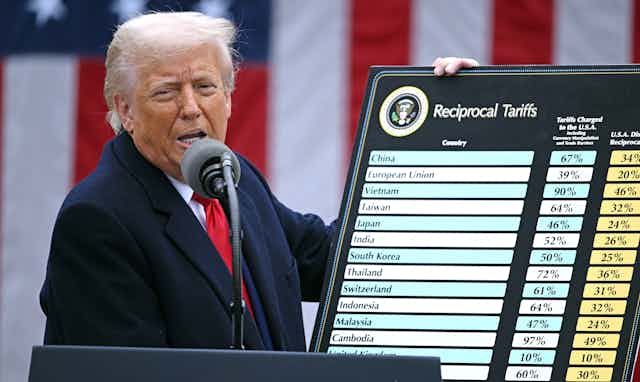
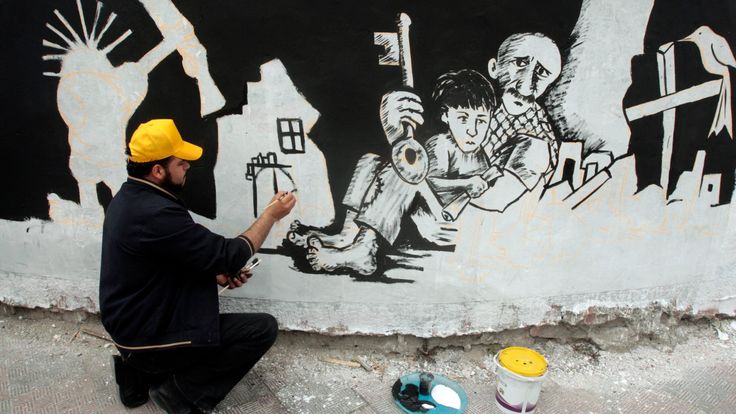
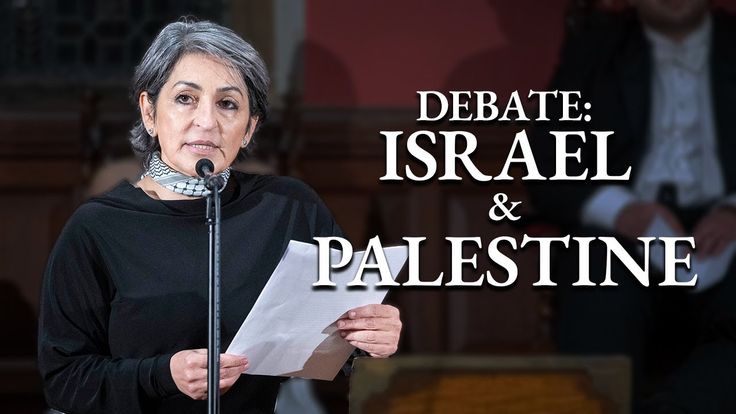
Comments are closed.